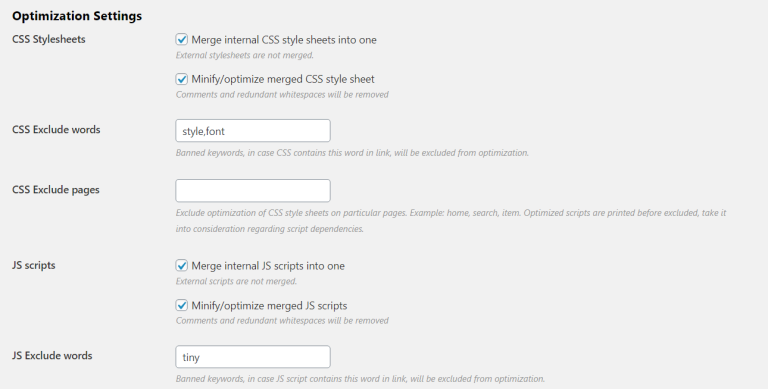
In the ever-evolving world of search engine optimization (SEO), staying ahead of the curve is essential. One of the most powerful yet underutilized tools in an SEO strategist’s arsenal is Schema Markup. As search engines become more sophisticated, they’re increasingly relying on structured data to better understand and present content to users. This article will explain what Schema Markup is, why it matters for SEO, and how you can implement it effectively to boost your website’s visibility and engagement.
What Is Schema Markup and Why It Matters
Schema Markup, also known as structured data, is a standardized format that you add to your website’s HTML code. It helps search engines like Google, Bing, and Yahoo better understand the content on your site by providing context about what each page is about.
Unlike traditional text-based content, which search engines interpret based on keywords and surrounding text, Schema Markup gives them a clear, machine-readable structure. This means that when users search for something relevant, your site has a better chance of appearing in rich snippets—enhanced search results that include additional details like star ratings, product prices, event dates, or even images.
For example, if you run an online store, implementing Product Schema could allow your products to appear with their prices, availability, and customer reviews directly in the search results. This not only makes your listing more attractive but also increases the likelihood of users clicking through to your site.
According to recent data, 72.6% of top-ranking pages on Google use schema markup, and 36.6% of search results now include rich snippets powered by structured data. These statistics underscore the growing importance of Schema Markup in modern SEO strategies.
How Schema Markup Impacts SEO Performance
Schema Markup doesn’t just make your site look better in search results—it directly affects your SEO performance in several key ways:
1. Boosts Click-Through Rates (CTR)
Rich snippets are more eye-catching than standard search results. When users see a result with star ratings, product prices, or event details, they’re more likely to click on it. Studies show that sites using Schema Markup can experience up to a 40% increase in CTR.
2. Improves Visibility and Rankings
While Schema Markup itself isn’t a direct ranking factor, it indirectly improves your rankings by helping search engines understand your content better. This leads to more accurate indexing and higher visibility for relevant searches.
3. Enhances User Engagement
Users tend to trust and engage more with rich snippets. According to research, 58% of users prefer enhanced listings over standard results. By providing more context and value upfront, you can increase dwell time and reduce bounce rates.
4. Supports Voice Search and AI Integration
As voice search and AI-driven assistants like Alexa and Google Assistant become more prevalent, structured data plays a critical role in delivering quick, accurate answers. Schema Markup ensures your content is optimized for these emerging technologies.
Step-by-Step Implementation Framework
Implementing Schema Markup may seem daunting at first, but with the right approach, it’s manageable even for non-technical users. Here’s a simple, step-by-step guide:
1. Define or Audit the Current Situation
Start by identifying which pages on your website would benefit most from Schema Markup. Common candidates include:
– Product pages
– Blog posts
– Event listings
– Local business information
– Reviews and testimonials
Use tools like Google’s Rich Results Test or Schema Validator to audit existing Schema on your site and identify areas for improvement.
2. Apply Tools, Methods, or Tactics
There are several ways to generate and apply Schema Markup:
– Use a Schema Generator Tool: Tools like Rank Math, Google’s Structured Data Markup Helper, or Schema.org provide templates for different types of content.
– Manual Coding: If you’re comfortable with HTML, you can write your own Schema Markup using JSON-LD format, which is recommended by Google.
– Content Management Systems (CMS): Platforms like WordPress offer plugins such as Rank Math or Yoast SEO that simplify the process of adding Schema Markup to your site.
3. Measure, Analyze, and Optimize
Once you’ve implemented Schema Markup, monitor its impact using tools like Google Search Console and Search Analytics. Track metrics such as:
– Click-Through Rate (CTR)
– Impressions
– Average Position
– User Engagement
Use this data to refine your strategy and ensure your structured data continues to deliver value.
Real or Hypothetical Case Study
Let’s take a hypothetical example of a local bakery, Sweet Treats Bakery, looking to improve its online presence. Before implementing Schema Markup, their search results were generic, with no images, reviews, or opening hours visible.
After applying LocalBusiness Schema and Review Schema, their search results began to feature:
– Their logo
– Opening hours
– Customer reviews with star ratings
– A map link to their location
As a result, their CTR increased by 35%, and they saw a 20% rise in foot traffic within the first month. This case study illustrates how Schema Markup can transform a basic search listing into a compelling, informative snippet that drives real-world results.
Tools and Techniques for Schema Markup
Here are some of the most effective tools and techniques for working with Schema Markup:
- Google’s Structured Data Markup Helper – A free tool that allows you to create and test structured data for various content types.
- Schema.org – The official source for Schema vocabulary, offering detailed documentation and examples.
- Rank Math – A powerful WordPress plugin that simplifies the process of adding and managing Schema Markup.
- Google’s Rich Results Test – A tool to validate your structured data and check for errors.
- Schema Validator – An independent tool for testing the validity of your Schema Markup.
- JSON-LD Generator – Useful for creating structured data in JSON-LD format, which is preferred by Google.
Each of these tools can help streamline the implementation process and ensure your Schema Markup is both effective and error-free.
Future Trends and AI Implications
As search engines continue to evolve, the role of Schema Markup is only going to grow. With the rise of voice search, AI-powered assistants, and multimodal search, structured data becomes even more critical. Here’s what to expect:
- Voice Search Optimization: Schema Markup will play a key role in delivering concise, accurate answers for voice-activated queries.
- AI and Semantic Understanding: Search engines like Google are increasingly using AI to interpret user intent. Structured data helps these systems understand content more accurately.
- E-A-T (Expertise, Authoritativeness, Trustworthiness): Schema can enhance your E-A-T score by showcasing authorship, reviews, and other credibility indicators.
To stay ahead, focus on creating high-quality, well-structured content that aligns with user intent and leverages the power of Schema Markup.
Key Takeaways
- Schema Markup is a type of structured data that helps search engines better understand your content.
- It enhances visibility, click-through rates, and user engagement in search results.
- Implementing Schema Markup is relatively simple and can be done using tools like Rank Math, Google’s Structured Data Markup Helper, or manual coding.
- It supports voice search, AI integration, and E-A-T factors, making it a valuable long-term investment.
- Regularly test and update your Schema Markup to ensure it remains effective and aligned with changing algorithms.
By embracing Schema Markup, you’re not just improving your SEO—you’re future-proofing your website for the next generation of search technology.
Meta Title: What Is Schema Markup & Why It Matters for SEO
Meta Description: Learn what Schema Markup is, why it matters for SEO, and how to implement it to boost your website’s visibility and engagement.
SEO Tags (5): Schema Markup, SEO, Rich Snippets, Structured Data, Local Business Schema
Internal Link Suggestions: [Parameter #1: Technical SEO Best Practices], [Parameter #2: Content Optimization Strategies]
External Source Suggestions: https://schema.org, https://developers.google.com/search/docs/advanced/structured-data











